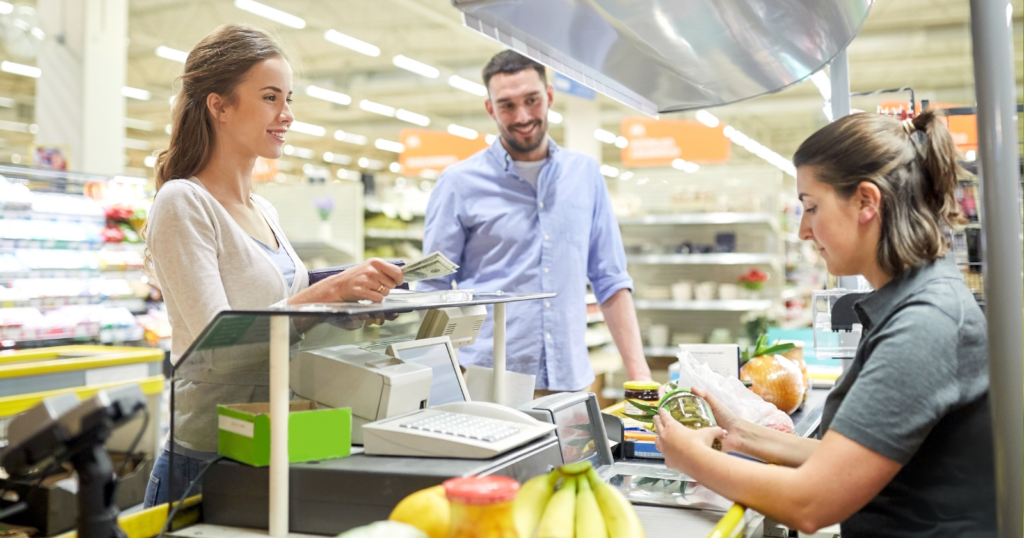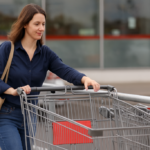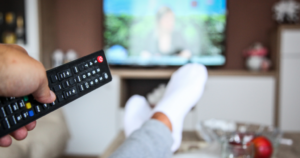There’s an interesting divide between people who opt for self-checkout and those who prefer to wait in line. It’s not just about convenience or speed, it often comes down to personality traits.
Those who’d rather line up than do self-checkout typically display certain unique characteristics.
Choosing the traditional checkout reveals more about a person than you might think. And we’ve managed to narrow it down to seven distinct traits.
In this piece, we’re going to take a closer look at these traits. Our goal is to understand the mindset of these individuals, and perhaps shed some light on why some of us still prefer human interaction over technology, even in this fast-paced digital world.
The traits might surprise you, and if you’re one of these line-lovers, you might even find yourself nodding in agreement. So buckle up and let’s discover what makes these folks tick.
1) Appreciation for human interaction
In a world where technology is rapidly taking over, some of us still value the human touch.
People who prefer lining up for checkout, instead of using the self-checkout stations, usually appreciate human interaction. They don’t see standing in line as a waste of time, but rather as an opportunity to engage with others.
This could be a simple greeting or a brief chat about the weather with the checkout staff. They value these interpersonal moments that a machine can’t replicate.
For them, it’s not just about getting their shopping done. It’s about the experience and maintaining that human connection.
This trait speaks volumes about their personality. It shows they’re sociable and value relationships, even fleeting ones with strangers.
So next time you see someone waiting in line rather than rushing through self-checkout, remember – they might just be valuing the chance to connect with another human being.
2) Attention to detail
Another trait I’ve noticed is a keen eye for detail.
This became apparent to me when I was grocery shopping with my friend Sarah. Despite the long queue, Sarah opted to wait in line rather than use the self-checkout. When I asked why, she simply said, “I like to double-check everything.”
Sarah meticulously watches as each item is scanned, ensuring no mistakes are made and that she’s being charged correctly. She also takes note of any offers or discounts that might not automatically apply at self-checkout.
This trait of being detail-oriented extends beyond the checkout line. In her professional life, Sarah is known for her thoroughness and precision. Whether it’s checking her work for errors or making sure all her tasks are completed to the highest standard, Sarah’s attention to detail is truly admirable.
Those who prefer traditional checkout lanes might not just be avoiding technology, they could be ensuring accuracy and precision in their transactions.
3) Patience is a virtue
In the fast-paced world we live in, patience can often seem like a forgotten virtue. But for those who choose to wait in line rather than use self-checkout, patience is a key trait.
These individuals are often not bothered by queues or waiting times. They understand that good things come to those who wait, and they’re willing to practice patience in their everyday activities, including shopping.
Interestingly, studies have shown that patient people tend to experience less depression and negative emotions, suggesting that opting for the checkout line may not only be a sign of a patient personality but also a healthier emotional state.
Perhaps the checkout line isn’t just a slower option, but also a choice for mental well-being.
4) Value for personal service
Those who choose the traditional checkout over self-checkout often have a high regard for personal service. They appreciate the effort and expertise of the staff, recognizing that their role is more than just scanning items.
These individuals delight in the small gestures – a smile, a friendly greeting, or a helpful suggestion. For them, these interactions add value to the shopping experience that a self-checkout machine simply can’t replicate.
Choosing personal service over convenience shows their respect and appreciation for the workforce. It’s a small but meaningful way of acknowledging the importance of each role within our community.
Don’t be too quick to judge those who choose to wait in line. They might just be showing their respect for personal service and the human element in our daily lives.
5) Less reliance on technology
I’ve always been a bit of a technophobe. Even when the world seems to be moving at lightning speed towards everything digital, I’ve often found myself hanging back.
That’s one of the reasons why I, like many others, prefer standing in line for checkout. It’s not that I can’t navigate the self-checkout system; it’s just that I don’t want to rely on technology for everything.
There’s a certain comfort in doing things the old-fashioned way. It feels more real, more tangible. Plus, it gives me a break from screens and digital interfaces.
This trait might make individuals like us seem outdated or resistant to change. But it’s not about being stuck in the past; it’s about choosing what feels more authentic and real to us. And sometimes, that means picking a checkout line over a self-service machine.
6) Embracing a slower pace
In our fast-paced world, slowing down can feel like a luxury. Yet, there are those who consciously choose to embrace a slower pace, even in their routine tasks like shopping.
These people prefer to wait in line for checkouts, taking their time to pack their groceries and chat with the cashier. They’re not in a rush to get things done and get out. Instead, they savor these moments of calm in their busy day.
This trait reflects a mindful way of living, where every moment is savored rather than rushed through. It’s a reminder that not everything has to be done at breakneck speed and that there’s value in taking our time.
The next time you see someone choosing the line over self-checkout, consider that they might be taking a moment to slow down and enjoy the present moment.
7) A sense of community
At its core, the choice to wait in line rather than use self-checkout can reflect a deep appreciation for community. These individuals often see shopping not just as a necessity, but as a part of their social fabric.
They value the small talk with the cashier, the occasional chit-chat with fellow shoppers, and even the simple nod of recognition from the staff. It’s these tiny interactions that make them feel connected to their local community.
In a world where digital connections often overshadow face-to-face interactions, choosing the checkout line can be a personal stand for real-world community connections. It’s a choice that embraces shared experiences and collective belonging.
So if you ever find yourself behind someone in line who could have used self-checkout, remember – they might be fostering a sense of community in their own small way.
Final thoughts: It’s about the human experience
At the heart of these traits lies a simple truth – those who prefer to wait in line rather than use self-checkout value the human experience.
In a world dominated by digital interfaces and automated systems, these individuals remind us of the unique warmth that comes with human interaction.
They celebrate the slower pace, the attention to detail, and the sense of community that can often be overlooked in our rush for efficiency.
A study from Harvard Business Review suggests that despite the rise of self-service technologies, people still crave human interaction, especially when there’s a problem that needs resolution.
The study further underlines that companies should not overlook the importance of a human touch.
So, as we move further into an era of technological advancements, let’s not forget the importance of human connection.
Whether it’s a simple smile from a cashier, a friendly chat in line, or the satisfaction of supporting local jobs, these seemingly small aspects can greatly enrich our daily experiences.
The next time you’re at the supermarket, take a moment to observe. Would you choose efficiency over interaction, or would you join those who prefer to line up? And in making that choice, what does it reveal about you?
















